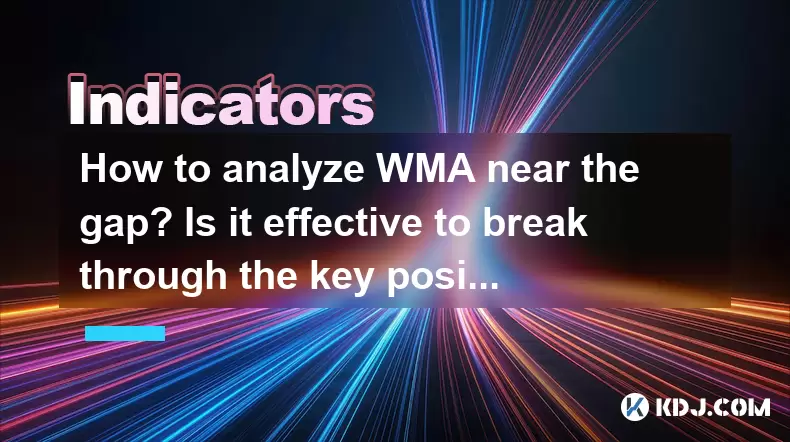-
 Bitcoin
Bitcoin $119000
-2.21% -
 Ethereum
Ethereum $4315
1.01% -
 XRP
XRP $3.151
-3.11% -
 Tether USDt
Tether USDt $0.0000
0.00% -
 BNB
BNB $808.5
-0.71% -
 Solana
Solana $175.8
-4.21% -
 USDC
USDC $0.9999
0.00% -
 Dogecoin
Dogecoin $0.2250
-3.92% -
 TRON
TRON $0.3469
1.77% -
 Cardano
Cardano $0.7818
-3.81% -
 Chainlink
Chainlink $21.47
-2.10% -
 Hyperliquid
Hyperliquid $43.30
-6.81% -
 Stellar
Stellar $0.4370
-2.84% -
 Sui
Sui $3.682
-4.40% -
 Bitcoin Cash
Bitcoin Cash $590.8
2.67% -
 Hedera
Hedera $0.2484
-5.20% -
 Ethena USDe
Ethena USDe $1.001
0.00% -
 Avalanche
Avalanche $23.10
-4.29% -
 Litecoin
Litecoin $119.2
-3.96% -
 Toncoin
Toncoin $3.409
0.90% -
 UNUS SED LEO
UNUS SED LEO $9.016
-1.29% -
 Shiba Inu
Shiba Inu $0.00001304
-3.82% -
 Uniswap
Uniswap $11.18
1.33% -
 Polkadot
Polkadot $3.913
-3.51% -
 Cronos
Cronos $0.1672
-3.08% -
 Dai
Dai $1.000
0.02% -
 Ethena
Ethena $0.7899
-4.70% -
 Bitget Token
Bitget Token $4.400
-1.23% -
 Pepe
Pepe $0.00001132
-5.93% -
 Monero
Monero $257.9
-6.44%
How to analyze WMA near the gap? Is it effective to break through the key position of WMA by gapping?
WMA, which emphasizes recent prices, helps traders analyze gaps in crypto markets; effectiveness depends on WMA significance, market context, and volume.
May 29, 2025 at 08:57 am

Understanding Weighted Moving Average (WMA)
The Weighted Moving Average (WMA) is a technical indicator used in the cryptocurrency market to smooth out price data by assigning a heavier weighting to more recent price data. Unlike a simple moving average where each data point is given equal importance, WMA places greater emphasis on recent prices, making it more responsive to new information. This can be particularly useful in the fast-paced crypto market where trends can shift quickly.
The Concept of Gaps in Cryptocurrency Trading
In the context of cryptocurrency trading, a gap refers to a break between price levels on a chart, typically occurring when the market opens at a different price than it closed. Gaps can be caused by various factors, including significant news events or shifts in market sentiment. Understanding gaps is crucial as they can provide insights into potential market movements and trading opportunities.
Analyzing WMA Near the Gap
When analyzing the WMA near a gap, traders look for specific patterns and signals that can indicate whether the gap will be filled or if the price will continue in the direction of the gap. Here are some key points to consider:
Identify the Gap: First, confirm the presence of a gap on the chart. This can be done by observing a clear break between consecutive candlesticks.
Plot the WMA: Overlay the WMA on the price chart. Commonly used periods for WMA in crypto trading are 20, 50, and 200 days.
Observe the Interaction: Pay attention to how the price interacts with the WMA near the gap. If the price is above the WMA and the gap is upward, this could indicate bullish momentum. Conversely, if the price is below the WMA and the gap is downward, it suggests bearish momentum.
Look for Confluence: Check for other technical indicators like RSI, MACD, or volume to confirm the signals provided by the WMA near the gap.
Effectiveness of Breaking Through Key WMA Positions by Gapping
The effectiveness of breaking through key WMA positions by gapping can vary based on several factors. Here’s a detailed look at this phenomenon:
Significance of the WMA Position: The effectiveness often depends on the significance of the WMA being breached. For instance, breaking through a 200-day WMA by gapping can be more impactful than a shorter-term WMA like a 20-day.
Market Context: The broader market context is crucial. A gap that breaks through a key WMA position during a period of high volatility or significant news events may be more likely to sustain the move.
Volume and Confirmation: High trading volume accompanying the gap can provide additional confirmation that the break through the WMA is valid. Conversely, low volume might suggest a false break.
Historical Precedence: Analyzing past instances where gaps have occurred near key WMA positions can provide insights into the likelihood of the current gap sustaining its move.
Practical Steps to Analyze WMA Near the Gap
To effectively analyze WMA near the gap, follow these practical steps:
Select the Right Timeframe: Choose a timeframe that aligns with your trading strategy. Shorter timeframes like 1-hour or 4-hour charts are useful for day traders, while longer timeframes like daily or weekly charts are better for swing traders.
Set Up Your Chart: Use a reliable trading platform to set up your chart with the necessary indicators. Ensure the WMA and price data are clearly visible.
Identify the Gap and WMA Interaction: Mark the gap on your chart and observe how the price interacts with the WMA near this gap. Use different colors or annotations to highlight these areas for easier analysis.
Apply Additional Indicators: Use other technical indicators to confirm or refute the signals you see from the WMA and gap interaction. This could include momentum indicators like RSI or trend-following indicators like MACD.
Monitor and Adjust: Keep an eye on the price movement after the gap. Be prepared to adjust your analysis as new data comes in. This includes watching for any reversal patterns that might suggest the gap will be filled.
Case Studies of WMA and Gap Analysis
Examining real-world case studies can provide valuable insights into how WMA and gap analysis can be applied effectively. Here are a couple of examples:
Bitcoin (BTC) Case Study: In a recent scenario, Bitcoin experienced a significant upward gap that broke through its 50-day WMA. The gap was accompanied by high trading volume and positive news about institutional adoption. The price continued to rise, confirming the bullish signal provided by the gap and WMA interaction.
Ethereum (ETH) Case Study: In another instance, Ethereum gapped down through its 200-day WMA following negative regulatory news. The gap was followed by increased selling pressure and the price continued to decline, validating the bearish signal.
Frequently Asked Questions
Q: Can WMA be used effectively on all timeframes for gap analysis?
A: While WMA can be used on various timeframes, its effectiveness for gap analysis can vary. Shorter timeframes may provide more frequent signals but can be noisier, whereas longer timeframes offer more reliable signals but with fewer trading opportunities. It's essential to align the timeframe with your trading strategy and risk tolerance.
Q: How does the choice of WMA period affect gap analysis?
A: The choice of WMA period significantly impacts gap analysis. Shorter periods like the 20-day WMA are more sensitive to recent price changes and can provide earlier signals but may be prone to false breaks. Longer periods like the 200-day WMA offer more significant trend confirmation but may lag in signaling new trends. Traders often use multiple WMAs to get a comprehensive view.
Q: Are there specific market conditions where gap analysis with WMA is more reliable?
A: Gap analysis with WMA tends to be more reliable in markets with higher liquidity and during periods of significant news events. High liquidity ensures that gaps are more likely to be sustained, and significant news can provide the momentum needed to break through key WMA positions effectively.
Q: Can WMA and gap analysis be used in conjunction with other forms of analysis?
A: Yes, WMA and gap analysis can be effectively combined with other forms of analysis such as fundamental analysis, sentiment analysis, and other technical indicators. This multi-faceted approach can provide a more robust basis for trading decisions, helping to confirm signals and reduce the likelihood of false positives.
Disclaimer:info@kdj.com
The information provided is not trading advice. kdj.com does not assume any responsibility for any investments made based on the information provided in this article. Cryptocurrencies are highly volatile and it is highly recommended that you invest with caution after thorough research!
If you believe that the content used on this website infringes your copyright, please contact us immediately (info@kdj.com) and we will delete it promptly.
- Bitcoin Price Rebound: Michael Saylor's Strategy and the Bullish Outlook
- 2025-08-13 00:50:12
- Dogecoin, Maxi Doge, Explode: Riding the Meme Coin Wave to the Moon (or Valhalla!)
- 2025-08-13 00:50:12
- Ethereum's $20 Billion Rally? Decoding the Latest Moves
- 2025-08-13 00:30:12
- Ancient Coins, Trade Networks, and the Rising Sun: Unearthing Southeast Asia's Economic Past
- 2025-08-13 00:30:12
- Dogecoin, Maxi Doge, and Whales: A New Era for Meme Coins?
- 2025-08-12 23:57:42
- PRC Coin: Revolutionizing Student Housing Payments with PRC Technologies and its Official Website
- 2025-08-12 23:57:42
Related knowledge

What does it mean when the +DI and -DI cross frequently in the DMI indicator but the ADX is flattening?
Aug 11,2025 at 03:15am
Understanding the DMI Indicator ComponentsThe Directional Movement Index (DMI) is a technical analysis tool composed of three lines: the +DI (Positive...

What does it mean when the moving average, MACD, and RSI all send buy signals simultaneously?
Aug 11,2025 at 01:42pm
Understanding the Convergence of Technical IndicatorsWhen the moving average, MACD, and RSI all generate buy signals at the same time, traders interpr...

What does it mean when the price is trading above the SAR indicator but the red dots are densely packed?
Aug 09,2025 at 11:49pm
Understanding the SAR Indicator and Its Visual SignalsThe SAR (Parabolic Stop and Reverse) indicator is a technical analysis tool used primarily to de...

What does it mean when the candlestick chart forms a "Morning Star" but trading volume is sluggish?
Aug 12,2025 at 06:28pm
Understanding the Morning Star Candlestick PatternThe Morning Star is a three-candle bullish reversal pattern commonly observed in cryptocurrency pric...

What does it mean when the RSI indicator moves sideways for an extended period between 40 and 60?
Aug 10,2025 at 08:08am
Understanding the RSI Indicator in Cryptocurrency TradingThe Relative Strength Index (RSI) is a momentum oscillator widely used in cryptocurrency trad...

What does it mean when the MACD histogram continues to shorten but the price reaches a new high?
Aug 09,2025 at 09:29pm
Understanding the MACD Histogram and Its ComponentsThe MACD (Moving Average Convergence Divergence) indicator is a widely used technical analysis tool...

What does it mean when the +DI and -DI cross frequently in the DMI indicator but the ADX is flattening?
Aug 11,2025 at 03:15am
Understanding the DMI Indicator ComponentsThe Directional Movement Index (DMI) is a technical analysis tool composed of three lines: the +DI (Positive...

What does it mean when the moving average, MACD, and RSI all send buy signals simultaneously?
Aug 11,2025 at 01:42pm
Understanding the Convergence of Technical IndicatorsWhen the moving average, MACD, and RSI all generate buy signals at the same time, traders interpr...

What does it mean when the price is trading above the SAR indicator but the red dots are densely packed?
Aug 09,2025 at 11:49pm
Understanding the SAR Indicator and Its Visual SignalsThe SAR (Parabolic Stop and Reverse) indicator is a technical analysis tool used primarily to de...

What does it mean when the candlestick chart forms a "Morning Star" but trading volume is sluggish?
Aug 12,2025 at 06:28pm
Understanding the Morning Star Candlestick PatternThe Morning Star is a three-candle bullish reversal pattern commonly observed in cryptocurrency pric...

What does it mean when the RSI indicator moves sideways for an extended period between 40 and 60?
Aug 10,2025 at 08:08am
Understanding the RSI Indicator in Cryptocurrency TradingThe Relative Strength Index (RSI) is a momentum oscillator widely used in cryptocurrency trad...

What does it mean when the MACD histogram continues to shorten but the price reaches a new high?
Aug 09,2025 at 09:29pm
Understanding the MACD Histogram and Its ComponentsThe MACD (Moving Average Convergence Divergence) indicator is a widely used technical analysis tool...
See all articles

























































































